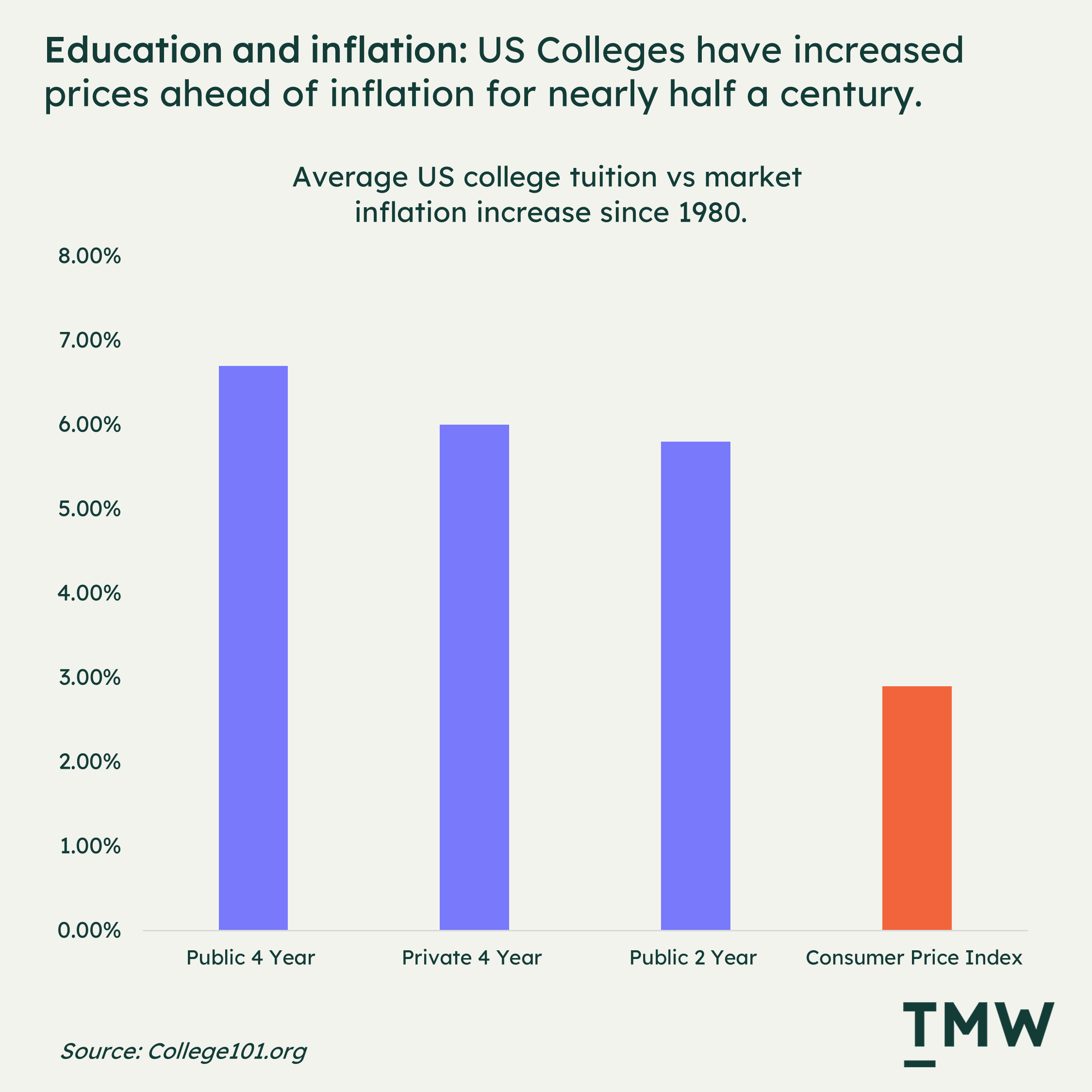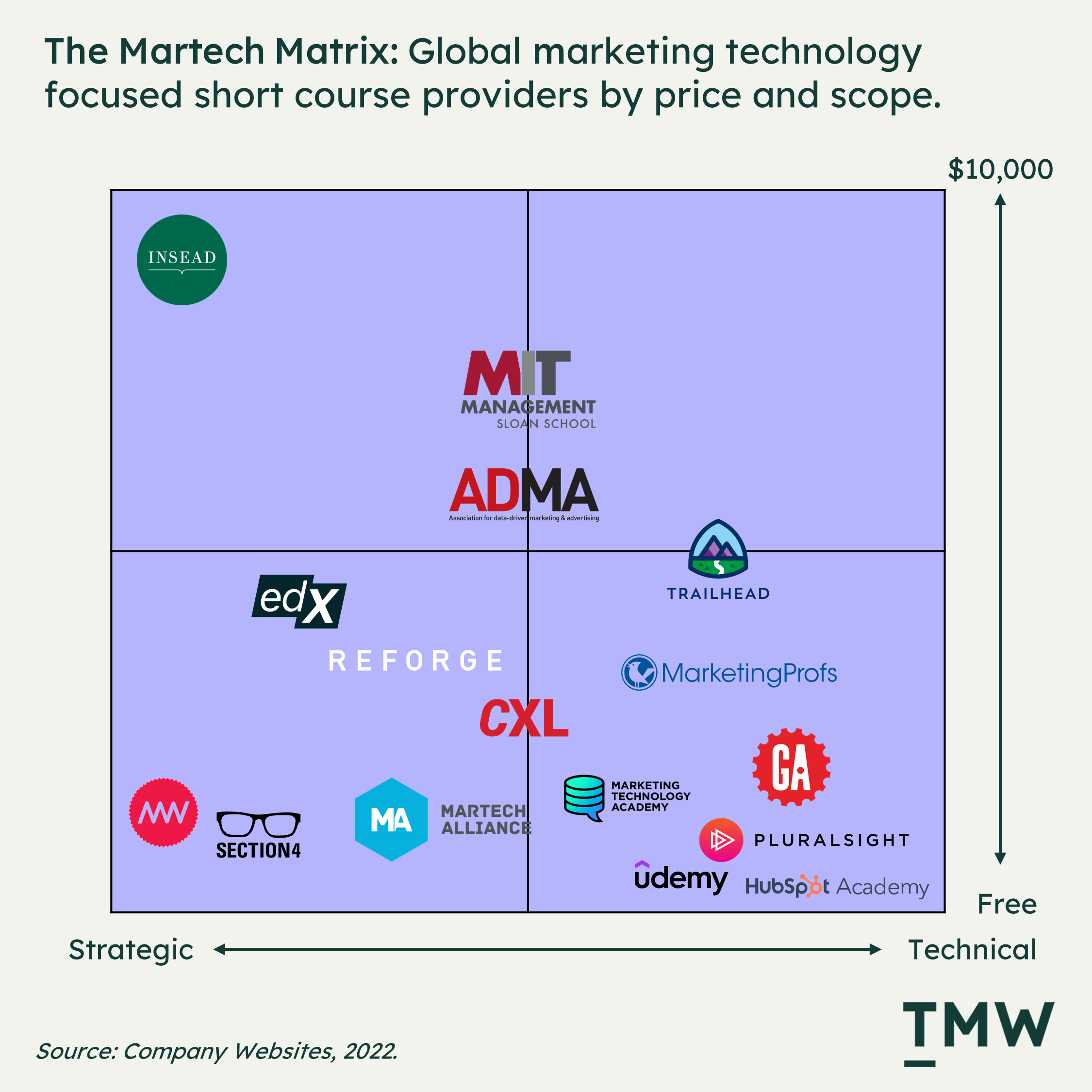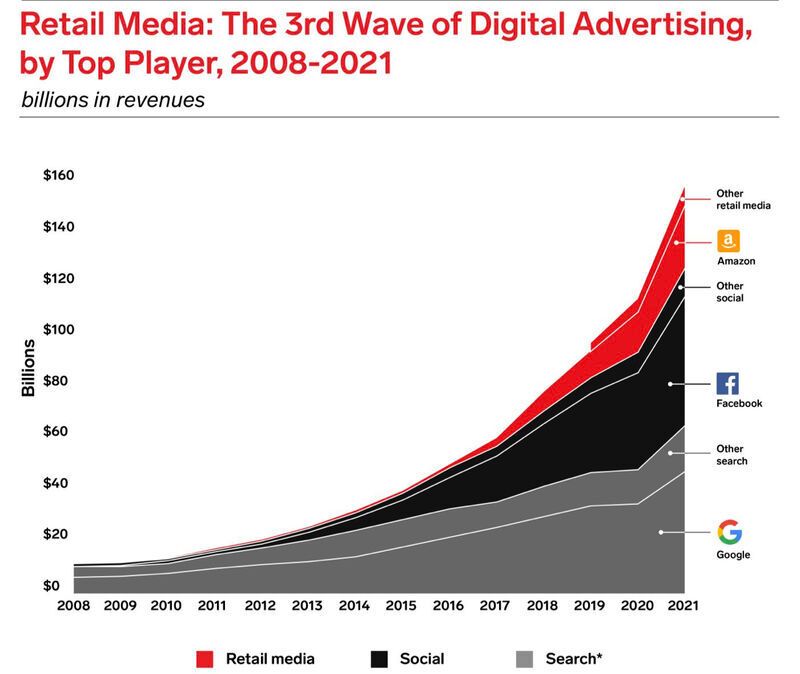TMW #068 | The state of Martech education, the rise of retail media, and the future of the browser
Welcome to The Martech Weekly, where every week I review some of the most interesting ideas, research, and latest news. I look to where the industry is going and what you should be paying attention to.
👋 Get TMW every Sunday
TMW is the fastest and easiest way to stay ahead of the Martech industry. Sign up to get the full version delivered every Sunday for this and every TMW, along with an invite to the TMW community. Learn more here.
Welcome to 2022 and the year’s first TMW newsletter. If you missed it you can read three ways to think about Martech in 2021 for a summary of what happened last year and what to anticipate this year.
Here’s the week:
- The state of Martech education: The imbalance in Martech education is contributing to a lack of high-quality talent.
- The rise of retail media: Search and social advertising was last decade, and eCommerce stores are becoming the next thing.
- The future of the browser will be private: Brave, the browser that rewards you for your data just hit 50 million MAUs.
- Everything else: Are we actually using first-party data? Web3’s technical problems, Group M on consumer attitudes to tech, the API landscape, ethical targeting, Shopify in your store, and something called Cryptoland!
✍ Commentary
The state of education in Martech. If I were to ask you where I would go to get a well-rounded education in the marketing technology industry where would you point me? My answer would likely be a mix of short courses on business and technical training. One thing I won't be able to do is offer a single institute that can do both.
Education in Martech has no clear authority and no real barometer of what is valuable and what is junk in the marketplace. In fact, if you’re anything like me, you’ve learned the vast majority of your skills on the job, through trial and error.
And the reality for people who are more senior in their careers, the options become vastly more expensive, theoretical, and harder to find.
If we survey the education industry holistically, a key data point determining what is influencing change is tuition pricing. Despite the accessibility of the internet, since 1980 university tuitions are more expensive and exclusive than ever. Tuitions have outpaced inflation by over 100%, with no meaningful innovation to justify such an increase. (And no, Zoom classes are not innovative). If a college degree was treated like any other consumer product the costs vs benefit ratio wouldn’t make sense to anyone.

But education is not like every other product. Due to centuries of branding efforts and integrating with the social fabric, getting an undergraduate degree has become a right of passage to employment, community, and an economic future. Research suggests that 90% of US citizens who complete an undergraduate degree enjoy social mobility out of poverty, whereas 47% will remain in the poor circumstances in which they are born.
It is this right of passage that creates little incentive for universities to create courses and professional pathways for new and emerging sectors. If most people keep paying more without any major improvements, nothing needs to be fixed.
Martech is one of these sectors, where the technology, disciplines, and skills sets are always changing, and at a rapid pace. Since 2011, the number of Martech companies launched has grown from 150 to more than 8,000. Growing from a niche category to an entire economy in less than 10 years means that universities struggle to keep ahead. With global talent shortages impacting the industry, the ability to offer education for those who want to understand how marketing and technology intersect and plot a path to a successful career is paramount.
The other challenge is that Martech is wonderfully diverse. Education is often delivered around a core bundling of topics, but if you were to design an undergraduate degree for Martech where could you focus? Analytics or customer experience? Business workflow design, advertising, or creative? How does digital marketing intersect? There’s no singular point of view for someone who works in Martech. Compare this with a discipline such as architecture. The industry has a clear understanding of what’s needed from an architect and the skills needed to progress a career. Universities struggle with fluid concepts when designing education products, and until the industry slows down (which is unlikely), there isn’t going to be an authoritative introduction to the industry in the shape of an undergraduate degree.
This is a shame, because when I’m speaking with TMW subscribers, those who are new to the industry are asking questions like – “where do I go to future proof my career?” Or they present a kind of skepticism like “Will the vertical I’m working in be around in 5 years? And increasingly, they want to know where the opportunities are “what’s going to be the major trend that I can spend ten years working on?” These are all valid questions for anyone starting their career. The answers are hard to find.
So what does the current marketing technology education landscape look like? To understand the space, you must leave the university gates and looks at companies building educational products and short courses in the form of ongoing professional education. These are mostly a combination of startups and offshoots from major universities.
There are two gaps in the marketing technology education landscape. Almost all Martech education coming from short course providers are imbalanced for beginners and seasoned executive alike.

Beginner educational products are focused on technical skills and siloed disciplines. Brands like General Assembly, Udemy, Hubspot Academy, and Plural Sight are so low cost that some of them are free. These products can give you a good grounding in a specific corner of Martech, like building an SEO strategy or implementing an analytics solution. And many low to no cost offerings also come from technology vendors who want to skill up their customers to retain them.
What this creates is a highly tactical understanding of the industry in a person's early career, which aligns to kinds of work when starting out, but does not give someone a business strategy understanding as they progress. It may explain why so many marketers are obsessed with tactics, and struggle when it comes to creating a real strategy or communicating the value created back to the business. Asking 20-year-olds to specialize is a recipe for tunnel vision.
On the other side, if you’re looking for a grounding in more strategic thinking in Martech, senior to executive education providers are your answer. The problem is that these products are vastly more expensive and restrictive. Brands like INSEAD and MIT Sloan lead the charge offering courses ranging from $5,000 to $10,000. While others like Section 4 and the Mini MBA offer very condensed courses at a lower $1,000 price point. It’s here where you’ll learn how to navigate a digital transformation project, understand the strategies of successful brands and the theories behind marketing technology. These skills should not be relegated to the corner office, they should be available to people throughout their careers.
There are some examples of a future of Martech education that balances both strategic and technical skills. The best examples are platforms like CXL that offer a diverse list of courses touching almost every corner of the industry to choose your own adventure. A more focused industry product is The Martech Alliance which offers introductory courses and frameworks specifically for Martech along with skill sets like understanding the role of a CDP and building a Marketing Operations practice.
While the Martech category has grown exponentially over the past years, the way people are trained from a technical and theoretical perspective is sorely lacking. It will be only a matter of time until universities start to build education products around the category, but there are underserved opportunities to offer newcomers apprenticeships and industry-based learning products. If you’re working in a leadership capacity, this might be one long-term solution to the building talent shortage in Martech. Don’t wait for universities to catch up.
The fractured state of the Martech education landscape means that attracting and retaining great talent becomes harder, as the pathways are not clear. And for those who are serious about building a career, finding an authoritative institution to learn from is hard to come by.
We need more practitioners, leaders, and executives in the Martech industry who have a more balanced understanding of both technology and strategy. It’s only then we’ll see better campaigns, better experiences, and more successful digital transformation projects. Because after all, your people are the ones who are creating the future, and they deserve a well-rounded introduction to Martech. Links: Cheifmartech landscape growth. The problems of college education. Higher ed 2.0. Fixing advertising education.
📈Chart Of The Week
The rise of retail media. For a long time, centralized programmatic advertising belonged to the domain of search and social media. Now retailers like Amazon, Walmart, Tesco, and Best Buy are building ad networks and leveraging their rich first-party shopping data at scale. Link

📰 Latest Developments
Brave reaches 50 million MAUs. The Brave browser is one of the first mainstream privacy-focused browsers. For the data you do hand over to advertisers, you’re rewarded with cryptocurrency payment. It’s a strong indicator that many people are willing to move on to something more privacy-focused than Chrome. Link
Life360 caught selling your kid’s data. The family safety app is used by more than 33 million people worldwide and is used for parents to track their kid's whereabouts. Most of the data that is being sold to advertisers is precise location tracking which opens the company to privacy scrutiny. Link
Mastercard buys Dynamic Yield. This company was sold to McDonald’s for an eye-watering sum of $300 million in 2019 on the premise that the technology would be used to personalize drive-through menu boards. Turns out that McDonald’s is pivoting away from these use cases after some trial and error. Link
📚 Reading
What are we doing with all our first-party data? Not much, according to a WSJ report tracking the changing strategies to more collect customer data in response to increasing big tech regulation and the demise of the third party cookie. Link
Web3’s technical challenges. If Web3 is the future, then why is the underlying blockchain technology costing 25 times more than an Amazon EC2 instance to do simple computing tasks? Link
Are our agile frameworks slowing us down? Four case studies from four different sectors indicate that it is very likely that they are. Link
🔢 Data & Insights
Group M on consumer trends. We are wearier about our online privacy and are more confused about new technology categories than ever. Link
Omnichannel in APAC. People in region are more likely than in other places to use a combination of offline and online tools to help them purchase products. For most consumers, there are trade-offs with each, but combining the best of both worlds creates lasting customers. Link
The API landscape. Someone has been collecting data on every single API company in the world. 🤯 Link
💡 Ideas
Ethical targeting. Most marketers are concerned about a cookieless future, but there’s a reason why cookies are going away. Changing the language from the tech to the strategy appears to make a lot of sense as whatever comes next in tracking needs to follow regulation and consumer sentiment, not the other way around. Link
Shopify in stores. The company is working on smart in-store retail products. The systems will measure the density and behaviors of shoppers to optimize shop floor layouts and experiences. This is indicative of the growing trend of pure-play eCommerce brands entering the physical retail space. Link
The Guardian reaches 1 million paying subscribers. This is the only publisher that has been able to hit these kinds of numbers without a paywall. By appealing to the importance of journalism they’ve been able to convince a lot of people to pay for content. Link
✨ Weird and Wonderful
How a joke credit card went viral. This Columbian company introduced a new product as a joke and the demand was unlike anything the company has seen before. Link
Animate your kids drawings! Facebook is working on an AI product that turns your drawings into cartoon characters. I spent way too much time on this over the weekend. Link
Cryptoland. Link
Stay Curious,
Make sense of marketing technology.
Sign up now to get TMW delivered to your inbox every Sunday evening plus an invite to the slack community.
Want to share something interesting or be featured in The Martech Weekly? Drop me a line at juan@themartechweekly.com.
